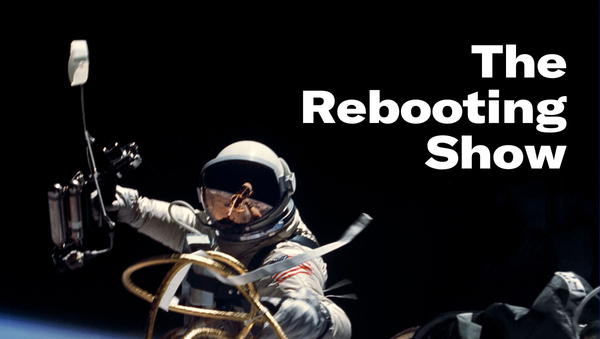How Famous Birthdays built a data business from celebrity searches
The IMDB of the creator class cashes in on internal search data

Subscribe on Apple Podcasts and Spotify Apple users: Please leave a rating and review.
When it comes to business models, software models beat publishing ones. Recurring revenue scales more quickly and at far better margins.
For a decade, Famous Birthdays has chronicled the rise of digital culture through its platform for finding out more information about the digital stars from TikTok and YouTube, as well as more traditional pop stars. Famous Birthdays has relied heavily on its internal search data as the “North Star” of its business. The company noticed Charli D’Amelio rising in popularity in 2019 and recorded a video interview with her before the TikTok star exploded in popularity. That formed the basis of the Famous Birthdays Pro product that offers proprietary data on who is rising and falling in popularity. Clients include platforms, influencer agencies and services, and talent representation firms.
“We add more clients and it just grows,” said Evan Britton, founder of Famous Birthdays. “If you pivot to video, you have to create that content and you get some margin on top of it. Ad-based businesses aren't as exciting, We could have charged our users a few bucks a month and given them extra functionality. But we went with the enterprise model, which is good because we don't have to gate anything with our users.”
Evan and I spoke about the opportunity he saw that led to Famous Birthdays, the opportunity for a data business and why he went all-in on programmatic advertising.
Finding opportunity in the shift to mobile
Technology shifts create opportunities. Back in 2012, the mobile phone was just starting to usurp the role of desktop in how people found and consumed information. Evan noticed that sites like Wikipedia were comprehensive, but not made for a mobile experience, particularly the small screen size of those early smartphones.
“Birthdays are always often the first thing people want to know about a celebrity, but there's other information they want to know. We were a mobile-friendly Wikipedia/IMDB. I'm more about user experience. The user experience on mobile for Wikipedia was not good. You don't want a book report on mobile. You want to get right to it. I saw that as an opportunity as an entrepreneur.”
New class of celebrities
As digital media has grown, it has created its own set of celebrities, grouped together under the broad term of “creators.” These can range from YouTube stars to Instagram and TikTok performers. What Famous Birthdays saw early on, back to the heyday of short video service Vine, was fans often have greater attachment to these digital stars.
“We would have a Vine star with a million followers sending us their headshot and their bio. And then at the same time we had these movie actors that wouldn't respond to us that had 5,000 followers. We saw very early that there was a gap between where culture was, but where the industry was set up. Traditional celebrities, you are a fan of them, but with social stars, you are really a fan. It's different when you see someone in a movie acting as someone else versus watching them brush their teeth every morning. Social just had a deeper level of fandom and we always saw that in our rankings.”
Why platforms got creator religion
Just about every major tech platform has their own twist on creators. Most have launched creator funds and rolled out tools designed to attract creators and offer paths to making money from their audiences on platforms. Part of this stems from wanting to distance themselves from news, although as Spotify is finding out, creators can create their own headaches.
“The social platforms have been burned by news. The social platforms for years wouldn't prioritize creators. That's completely flipped. Even [Meta CEO Mark] Zuckerberg has mentioned creators multiple times. They all have funds. YouTube keeps announcing how much they're paying creators. Snapchat was paying a million dollars a day. Creators have a lot of leverage because there's five or six social platforms that have scale, but creators are the fuel.”
Betting on programmatic ads
Many publishers gripe about lower ad rates in programmatic channels, but programmatic has been a boon to Famous Birthdays. Instead of chasing insertion orders for an intrusive “takeover” ad, the site has been able to focus on improving the product.
“We tripled down on programmatic. It has a lot of pros and a lot of cons. The one beauty of programmatic is that it's automated. We have nobody on the team that deals with the advertiser. We built great programmatic technology to connect to all the programmatic networks, but then we let them do what they do. We don't have any overhead on it. Instead of complaining about lower CPMs, I was happy that we had no overhead. If you're great at selling the advertisers, your users don't care. In fact, often it'll hurt your users because they don't want to see a Ford truck driving over your homepage.”

5 things to check out
The Forbes angle to the bonkers Razzlekhan story is a sign of the time for formerly high flying magazines. Time moves on, and the purpose of once-storied magazine brands changes. From Newsweek to Sports Illustrated to Forbes, once iconic names in the magazine industry are a shadow of what they once were, Josh Benton writes. The Forbes “platisher” model, which solicits contributions from regular people, was a bold move to prop up Forbes’ reach. Give them credit: When former boosters of this approach like HuffPost moved on, Forbes stuck to its strategy. Now it’s making an inevitable pivot to crypto.
The Joe Rogan-Spotify controversy has highlighted how alienated many are from the “mainstream media.” Jack Raines runs through the rap sheet against the news industry’s established players. One part that I keep seeing: The bad-news bias. Coming out of Covid, publishers would be wise to understand that finding the dark clouds, an inevitability of the news process, comes with a downside risk.
The Athletic will continue to be a polarizing publisher, as it has been nearly from its inception. Alex Sherman has an interview with the founders, who mostly dodge the pointed questions on whether the $550 million deal with The New York Times was “disappointing.” The more interesting discussion is around bundling, as the Times now has several subscription products, and is seeing the fastest growth outside of news.
Bored Ape Yacht Club is the Supreme of the emerging crypto world, the first crypto-native consumer brand to truly break out. The Verge highlights the inevitably chaotic ways owners of Bored Ape NFTs are cashing in on the growing value of their digital assets, including a deal to license an ape to a cannabis company. Jokes aside, crypto-native brands, with ownership fragmented by design, will become fascinating brand case studies.
The day after the Super Bowl is a good reminder that it’s the exception to the rule, the one instance where advertising is the draw rather than a nuisance. That’s why overblown conference talk of “turning brands into religions” is so ludicrous.

Send me a note with feedback: bmorrissey@gmail.com. If you’re interested in sponsoring The Rebooting, check out the media kit and get in touch.




